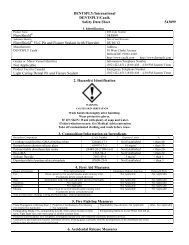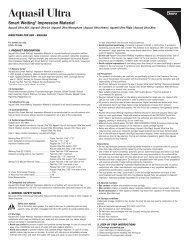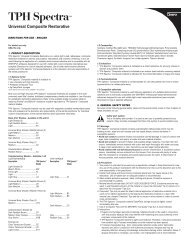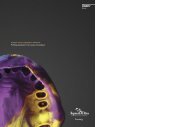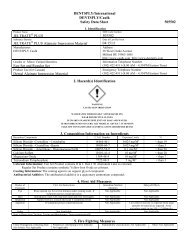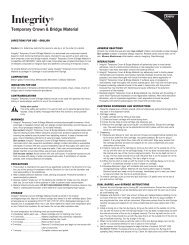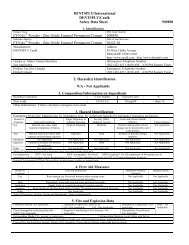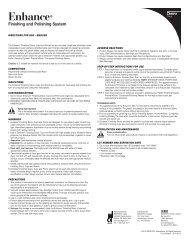Indirect and Direct Restorative Protocols - Caulk
Indirect and Direct Restorative Protocols - Caulk
Indirect and Direct Restorative Protocols - Caulk
You also want an ePaper? Increase the reach of your titles
YUMPU automatically turns print PDFs into web optimized ePapers that Google loves.
Figure 4. The small head of the Stylus ATC (DENTSPLY Professional,<br />
York, PA) enables visualization of the preparation site.<br />
A<br />
Figure 5A. The cutting effi ciency of the bur can be optimized by the<br />
Stylus ATC h<strong>and</strong>piece. 5B. Note the smooth tooth preparation<br />
achieved with minimal structural removal.<br />
B<br />
Table. Practical Tips for Using the Midwest ® Stylus ATC<br />
Tip<br />
Rationale<br />
Avoid excess<br />
pressure on the<br />
bur during tooth<br />
preparation ; there<br />
is no need to feather<br />
Lubricate <strong>and</strong> sterilize the h<strong>and</strong>piece<br />
prior to use in the operatory<br />
<strong>and</strong> between patients.<br />
Review proper<br />
air <strong>and</strong> water<br />
spray output<br />
prior to use.<br />
Verify that the bur<br />
is fully seated into<br />
the h<strong>and</strong>piece<br />
chuck.<br />
The device’s adaptive torque<br />
control reduces the amount of<br />
pressure needed for enhanced<br />
patient control <strong>and</strong> clinician<br />
comfort.<br />
Proper sterilization prevents<br />
cross contamination <strong>and</strong> potential<br />
health hazards, <strong>and</strong> it prolongs<br />
the life of the h<strong>and</strong>piece.<br />
A fi ne mist of water should be<br />
expressed using the unit, not<br />
a steady stream; increase the<br />
coolant air as needed until the<br />
desired mist is achieved.<br />
Full seating ensures most<br />
safe <strong>and</strong> effective use of the<br />
h<strong>and</strong>piece.<br />
for superior access in the oral cavity. The<br />
selection of an appropriate type of h<strong>and</strong>piece<br />
is dependent on the individual clinician<br />
<strong>and</strong> his or her practice. A h<strong>and</strong>piece<br />
system with an air-powered adaptive control<br />
combines air <strong>and</strong> electric control in a<br />
single unit (eg, Midwest® Stylus ATC,<br />
DENTSPLY Professional, York, PA) to<br />
provide the power <strong>and</strong> efficiency of electric<br />
h<strong>and</strong>pieces, without sacrificing the<br />
superior access, lighter weight, <strong>and</strong> familiar<br />
comfort of conventional high-speed<br />
units (Table).<br />
Developed through a unique partnership<br />
between industry manufacturers <strong>and</strong><br />
professionals, this instrument is the culmination<br />
of dental h<strong>and</strong>piece technology<br />
<strong>and</strong> unifies the leading features of previous<br />
electric <strong>and</strong> air-driven devices. As optimizing<br />
chairtime remains a key consideration<br />
motivating dental professionals, instrumentation<br />
such as the Stylus ATC thus<br />
represents a valuable addition to the clinical<br />
armamentarium used for proper tooth<br />
preparation <strong>and</strong> finishing (Figure 5). ■<br />
6



